Archaeology and Ancient History
A New History of Bronze: crafting, leadership and violence

About the project
Our understanding of change in the deep past is fundamentally defined by metalworking. The British and Irish Bronze Age (c.2200-600 BC) was a time of technological and social transformation following the use of copper, bronze, and gold. These new materials changed lives, altered flows of knowledge and exchange, and restructured community and power relationships. This project looks to re-think who metal makers and users were, and how metals were exchanged, utilised, and valued across the British and Irish Bronze Age.
technological and social transformation following the use of copper, bronze, and gold. These new materials changed lives, altered flows of knowledge and exchange, and restructured community and power relationships. This project looks to re-think who metal makers and users were, and how metals were exchanged, utilised, and valued across the British and Irish Bronze Age.
Funded by a Leverhulme Trust Research Leadership Award, over five years the project team will analyse thousands of objects from weapons and tools to the stones used to mine, make and maintain metals. This analysis will provide an unprecedented level of detail about how objects made from copper, bronze and gold were made, used and destroyed in different ways across Britain and Ireland.
Methodology
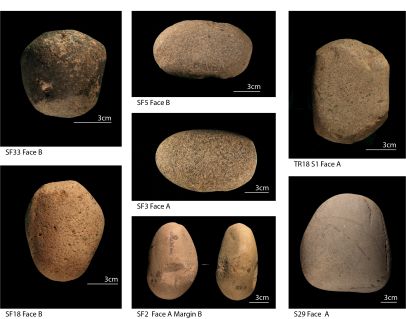
The project uses non-destructive techniques to study objects. Our primary approach is microwear analysis which examines marks on objects to determine the materials they have come into contact with and the manner in which they have been made and used. From notches on swords that tell us about Bronze Age combat, to the scratches on tools that tell us about the details of wood working, these objects contain histories of their use that have remained hidden until now.
In addition to microwear analysis we also employ a host of non-destructive forms of analysis including micro-XRF and scanning electron microscopy to understand the residues left behind on objects. These can help us spot when stone tools have been used to shape gold or bronze, for example.
Our project builds on the expertise developed at the University of Leicester in microwear analysis. It builds on a previous Leverhulme funded grant, Beyond the Three Age System (BTTAS), that examined objects across the Neolithic and Bronze Age and helped identify previously unknown evidence for tin working, gold working and gold decoration. This was followed by work funded by the British Academy looking at spectacular Bronze Age gold objects from burials close to Stonehenge. We have had objects on loan from the British Museum, Wiltshire Museum, Tullie House, Cambridge Archaeological Unit, Oxford Archaeology and others, and travelled across the country to study others.
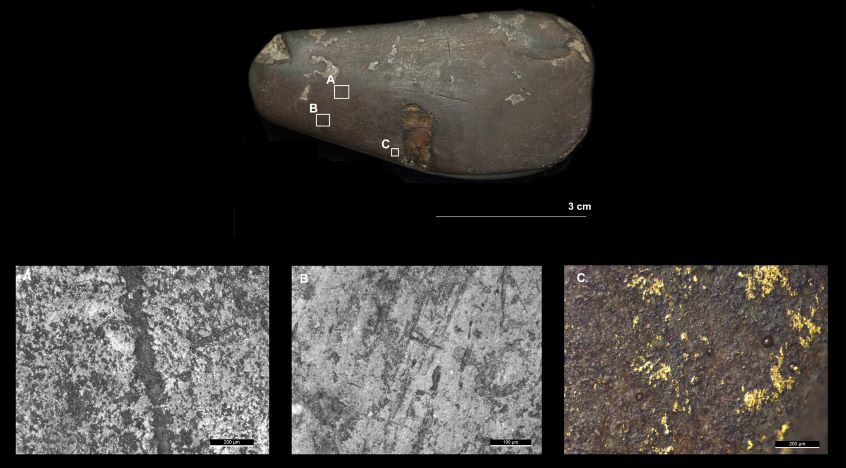
Our hosts
This project is based in the Centre for Material Worlds Past and Present, at the University of Leicester, and our state of the art microwear and microscopy laboratories. These were refurbished in 2023, funded by the University of Leicester, and equipped with cutting-edge equipment via funding from the Arts and Humanities Research Council.
Over the next five years, our team will look at a wide variety of Bronze Age objects in greater numbers, and greater detail, than has ever been done before. Situated in a sophisticated understanding of how metals and other materials made new ways of living, and new kinds of identity, possible, the project will write a new history of bronze.
If you are a curator, an FLO, or a finds specialist and have metalwork, or stone tools that you think might have been involved in metalworking, in your care that you think might benefit from study please get in touch by emailing Dr Rachel Crellin - rjc65@le.ac.uk.
Meet the team
The project is led by Dr Rachel Crellin and includes a team of postdoctoral research assistants and PhD students.
 |
Dr Rachel Crellin - Project Director Rachel Crellin specialises in the study of the Neolithic and Bronze Age in Britain and Ireland and archaeological theory. She is a metalwork wear-analyst with experience analysing a range of different Bronze Age metalwork and carrying out related experimental archaeology projects. |
 |
Prof Ollie Harris - Project Collaborator
Ollie Harris specialises in the study of the Neolithic and Bronze Age in Britain and Ireland and archaeological theory. Ollie was the Primary Investigator on the Leverhulme BTTAS project where he worked extensively with Rachel and Christina. It is through this project that the methods used in this project were developed and he forms a key part of the team. |
 |
Dr Christina Tsoraki - Ground Stone Tool and Gold Expert Christina Tsoraki specializes in prehistoric archaeology with a focus on material culture studies, stone technology and microwear analysis. Her research interests include object histories, cross-craft interactions, depositional practices and household archaeology. She investigates topics as diverse as Anatolian Neolithic plant processing toolkits, Minoan craft technologies, early goldworking in Bronze Age Britain and household activities in Archaic Greece. Between 2012 and 2018 she was the Head of the Ground Stone Team for the Çatalhöyük Research Project (Turkey). |
 |
Dr Matt Hitchcock - Metalwork Wear-Analyst Matt Hitchcock’s primary academic interests include themes surrounding art, violence, identity, dealing with death, object histories and museum studies. His work has mainly focused on later prehistoric and early Roman period Britain and Ireland, but he has also worked on material from Japan and Cyprus. He has previously worked as a field archaeologist for York Archaeological Trust, for the National Videogame Museum, Sheffield, and most recently, as a project curator at the British Museum. |
 |
Dr Dawid Sych - Metalwork Wear-Analyst Dawid Sych specializes in the study of metalwork and archaeometallurgy. His research interests include topics related to the Bronze Age and the Early Iron Age, archaeometallurgy, and the archaeology of warfare. He specializes in the analysis of the production traces and use-wear on metal artifacts, primarily made of copper and its alloys. |
|
Hamish Darrah - Collaborative Doctoral Partnership PhD Student Hamish’s research is funded through an AHRC collaborative doctoral partnership from the Scottish Heritage Consortium. The project is co-supervised by Rachel and Ollie at the University of Leicester and Dr Matt Knight and Dr Fraser Hunter at the National Museums of Scotland. Hamish is a practicing archaeological wood analyst and green wood worker with a background in experimental archaeology. His PhD will explore Late Bronze Age toolkits. |
|
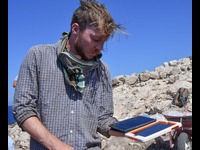 |
Mike Moody - PhD Student Mike Moody is an experimental archaeologist specialising in craft/material production, particularly lithics and early metallurgy. He is also an experienced field archaeologist in Canada, Britain, and Greece. His interests are in prehistoric archaeology in both North America and Europe, as well as community engagement through experimental archaeology. Mike’s PhD investigates material interactions in Early Bronze Age craft in Britain. |
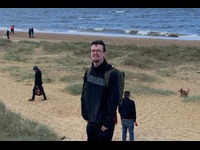 |
Jacob Metson - PhD Student Jacob specialises in the study of lithic technologies. His work particularly focuses on lithic use in metal using societies and the study on incumbent technologies in technological change. He has previously worked as a field archaeologist in many sites across Britain. His PhD will explore the role that stone played in the Bronze Age.
|
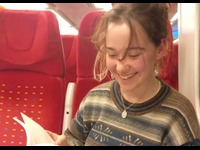 |
Hannah Curry - PhD student Hannah’s PhD research is funded through the AHRC Midlands 4 Cities Doctoral Training Plan and will explore extractive landscapes in Bronze Age Cornwall and Devon. The project is supervised by Rachel and Ollie, and Dr Ben Coles from Leicester’s School of Geography, Geology and the Environment. This builds on her MPhil, also supervised by Rachel and Ollie, researching Bronze Age tin mining. |
Example publications
The work on the new project is at an early stage, but a good sense of what we do can be found in publications from our completed research work. These come from the team members and our research, and where we have collaborated with others. All of the below are open access and free to download and share.
- Carey, C., Tsoraki, C., Jones, A.M., Harris, O.J.T., Crellin, R.J., Lyons, P. 2023. Beaker and Early Bronze Age tin exploitation in Cornwall, UK: cassiterite processing identified through microwear and pXRF analyses. European Journal of Archaeology 26, 147-67. doi:10.1017/eaa.2022.30
- Crellin, R.J., Tsoraki, C., Standish, C., Pearce R.B, Barton, H., Morriss, S., and Harris, O.J.T. 2023. Materials in movement: gold and stone in process at the Upton Lovell G2a burial. Antiquity 97: 86-103. doi:10.15184/aqy.2022.162
- Roy, A., Crellin, R.J., Harris, O.J.T. 2023. Use-wear reveals the first direct evidence for use of Neolithic polished stone axes in Britain. Journal of Archaeological Science Reports 49, 103882 doi:10.1016/j.jasrep.2023.103882
- Tsoraki, C., Barton, H., Crellin, R.J. and Harris O.J.T. 2023. From typology and biography to multiplicity: Bracers as ‘process objects’. Cambridge Archaeological Journal 33: 693-714. doi:10.1017/S0959774323000094
- Tsoraki, C., Barton, H., Crellin, R.J. & Harris, O.J.T. 2020. Making marks meaningful: new materialism and the microwear assemblage. World Archaeology 52, 484-502. doi:10.1080/00438243.2021.1898462